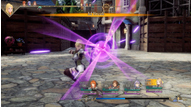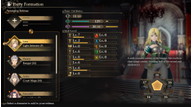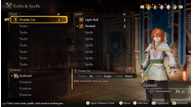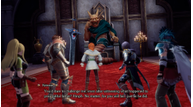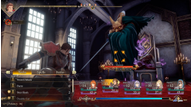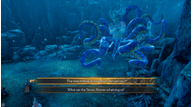
Romancing SaGa 2: Revenge of the Seven remakes one of the most unconventional RPGs ever brilliantly - Preview
Not many modern game franchises enjoy the small, consistent prosperity that the SaGa series has established within the last decade. These RPGs aren’t Square Enix’s most well-known games, and they are not heavy-hitters when it comes to sales performance. Most SaGa fans, including me, are aware that part of the reason that us SaGa enjoyers are spoiled with new remasters and entries lately is thanks to the ongoing success of the Romancing SaGa Re;univerSe mobile game. We know this, we accept this, and to some extent, we embrace this.
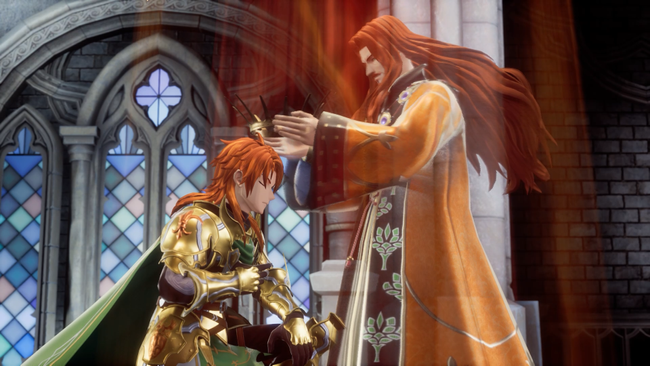
Even over the last three years, SaGa players have feasted with SaGa Frontier Remastered, Collection of SaGa Final Fantasy Legend, Romancing SaGa -Minstrel Song- Remastered, and just recently back in April, SaGa Emerald Beyond. I’ve been expecting the remaster treatment for SaGa Frontier 2 for a while, so I was completely caught off-guard when Square Enix pulled back the curtain on Romancing SaGa 2: Revenge of the Seven a few months ago.
Never in my wildest dreams could I have predicted that this installment in the SaGa series would receive such a lavish remake, especially one that looks to have significantly higher production values than recent SaGa releases by a considerable margin. Even within the unconventional SaGa franchise, Romancing SaGa 2 is unlike any other game in the series.
It is beloved for sure, though it is mechanically dense and offers a huge nonlinear experience that embodies the “play your own way” philosophy of the SaGa series. There are many choices for players to make that they will have to commit to; there are little-to-no universal “right” or “correct” answers in how to play Romancing SaGa 2 which, to some degree, has gradually become antithetical to the expectations of the mainstream audience for RPGs.
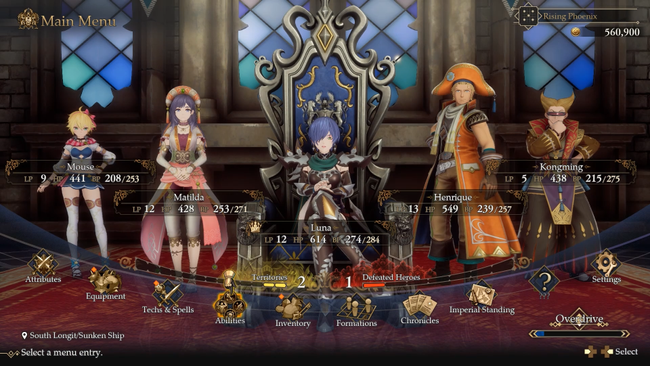
Romancing SaGa 2, and by extension its Revenge of the Seven remake, revolves around a war that spans over a thousand years against a group of antagonists known as the Seven Heroes. Each member of this group used to be a great hero in the past, but the legend of their deeds and their legacy gradually faded from the minds of the people over time. Angered that their sacrifices had been forgotten, the Seven Heroes have been resurrected as demons and now threaten all of humanity. People take control of entire generations of rulers from the kingdom of Avalon to rid the world from their evil, no matter how long it takes.
While my hands-on session with Romancing SaGa 2: Revenge of the Seven only provided a small glimpse of the full game, I was already blown away by how well it all came together. The original 1993 Super Famicom title was lovely and ambitious, yet its vision was clearly restrained by technological limitations. Revenge of the Seven aims to fully realize the promise and potential of that original vision in a grand fashion.
The demo begins at a very early point in the game where the second Emperor of Avalon, Gerard, has just succeeded his late father. A goblin raid served as my demo’s combat tutorial as I wandered around the streets of Avalon running into enemies on the field to initiate a battle encounter with them.
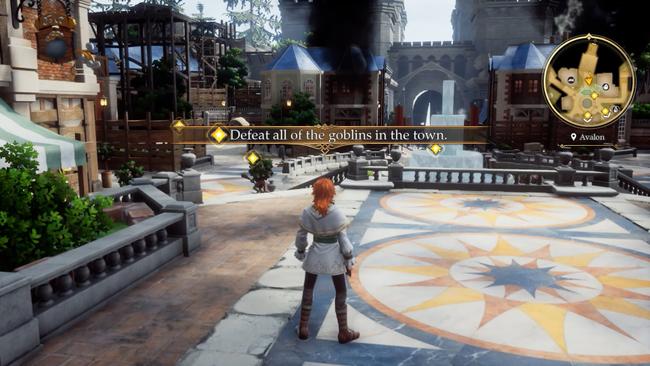
While combat remains turn-based, the flow of battles are quite different in Revenge of the Seven in several key ways. For returning Romancing SaGa 2 players, attacks are initiated immediately per character, once you choose a command for them in a battle. You no longer input several battle commands consecutively and watch them play out altogether to finish a full round of combat.
There’s a timeline that shows the turn order for allies and enemies; it displays them for the current and upcoming round of turns, similar to how Octopath Traveler handles it. This is inherently a nice new feature to have, because it makes it more apparent how attack properties, such as stuns and delays, are affecting the turn order at any given time. Bosses can also initiate Hazardous Attacks, which are similar to Desperation Attacks in another recognizable RPG series; the turn order timeline clearly indicates when these are coming, so players have a bit of time to set up proper countermeasures to it.
Another aspect where Revenge of the Seven takes inspiration from Octopath Traveler is in how enemy weaknesses are uncovered and displayed. Each foe will have numerous squares filled with question marks underneath them and each box corresponds to a weakness, whether it be to spears, greatswords, or a specific element of magic. The comparisons to Octopath Traveler are merely in presentation only though; Revenge of the Seven, of course, retains the core features integral to SaGa games.

Perhaps the biggest “quality of life” feature for both SaGa newcomers and veterans is how Glimmers are visually represented. For some SaGa entries, such as Romancing SaGa 2, there are a plethora of job classes that can often equip at least two different weapon types. Learning new Techs, SaGa’s terminology for skills, isn’t done through traditional means, such as leveling up or through a skill tree. Instead, a character has a chance to spontaneously acquire a new Tech by initiating an attack, so that means choosing a default basic attack with a spear can lead to a Glimmer, which is learning a new Tech on the spot. Even Techs that have been Glimmered may have another additional Tech that can Glimmer off of using them. I know this might sound like some sort of sick joke to potential brand-new SaGa players and I assure you this is all perfectly normal for the SaGa series - in fact, it’s the staple mechanic of it.
Now in Revenge of the Seven, there’s a lightbulb icon besides several Techs. This indicates that skill still has a Tech that can be Glimmered. Now I know that may seem like a small thing to include on paper, but this substantially rectifies the guesswork of whether a specific skill or battle command still has any remaining Techs to be learned or Glimmered off of it to series fans. If there is no lightbulb by a command in Revenge of the Seven, that means that there is no chance for a Glimmer to occur by utilizing that skill, so a player has exhausted all the potential learnable moves off of it.

As for the benefits of hitting enemy weaknesses in battle, that is tied to the new Overdrive and United Attack systems in Revenge of the Seven. These mechanics have been in other SaGa titles in some form, but they never existed in Romancing SaGa 2. Whenever a player gains the initiative by hitting a monster before entering combat and continually hitting a foe’s weaknesses, they’ll fill up the Overdrive gauge; once it’s full, people gain access to the United Attack battle command that has multiple party members simultaneously attack one after another in a single chain sequence. Only two party members could participate in a United Attack in the demo build I played, but there will be ways to expand this in the full release. This deals a devastating amount of damage upfront, so it’s a valuable tactic to consistently strive towards.
After the goblin incursion at Avalon, I had a choice to make on how I wanted to advance the narrative - go directly assault the Goblin Hideaway to strike at the root of the goblin invasion or deal with one of the Seven Heroes, Kzinssie, immediately. As I mentioned earlier about Romancing SaGa 2, there is no “right answer” between these options; simply do what you want to do. Revenge of the Seven will often ask players which scenarios they want to tackle next through a text selection, but people don’t actually have to commit to the answer right away from that selection alone.
When they visit the World Map to travel to the next scenario, the alternative option is still selectable just in case they changed their mind and would like to tackle that one instead. Eventually, doing enough free-form scenarios and kingdom development will automatically move them to the next generation where they decide the next ruler of Avalon and subsequently, their progress and stat advancements will be inherited to the next generation of party members.
I chose to travel to the Goblin Hideaway. Before departing for the caverns that housed my invaders, I had a few new characters and classes to add to my party; the initial demo tutorial only gave me four characters, so I could add a fifth party member now to complete my full party. Adding new party members could be done at the pub on the first floor of Avalon Castle. The recruitable members listed were also hanging around at certain parts of the first floor too, in case the player would rather go up to them directly to recruit them. I settled with a female Mercenary named Andromache who wielded both a sword and a bow.
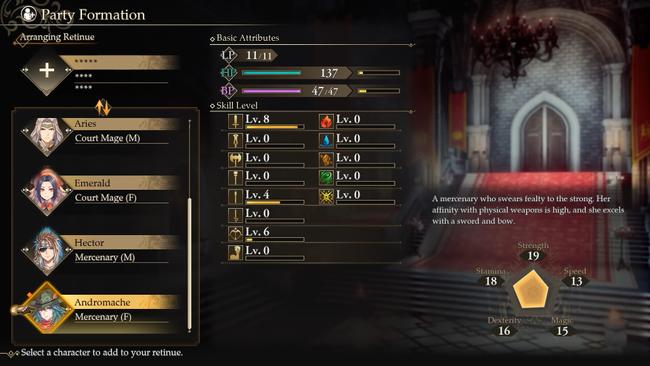
Traversing through the Goblin Hideaway cavern was fairly trivial. It was a set of linear tunnels with a few branching paths that led to treasure chests. An amusing observation I made is that getting the pre-emptive strikes on enemies to get an advantage in combat occurs as long as your weapon strikes the opponent, regardless of whether they’re facing you or not - so there were often times an enemy would be staring at Gerard while his sword swung down on them to get the upper hand in battle immediately. I eventually reached the end of the Goblin Hideaway and faced off against the Goblin King boss. It definitely hit hard, but I came out triumphant thanks to a few lucky Glimmers.
There was still so much to Revenge of the Seven I didn't get a chance to try out. One of the alternative save files i could have loaded in the demo build included the Sunken Ship free-form scenario that was touched upon in a recent press packet for the title. There was an entire City Development town-building system that I didn't have access to, either. Once again, Romancing SaGa 2 was already an unconventional entry in the SaGa series filled to the brim with features and Revenge of the Seven aims to not only flesh these out in a more meaningful manner, but also continue to build on top of that.

My brief time checking out Romancing SaGa 2: Revenge of the Seven was fantastic. This remake is shaping up to be something I’ll be playing for a long time; a lot of its presentation and battle enhancements made the experience refreshing. I was surprised at how much care was spent in the intricate cutscene choreography, since much of the Romancing SaGa 2 experience is left to a player’s decisions. Romancing SaGa 2 was such an expansive game that felt limitless for its time and I hope Revenge of the Seven is able to grant both newcomers and veterans alike that same feeling of a game with a seemingly infinite amount of possibilities shaped by the decisions you’ve made along every step of the way. Romancing SaGa 2: Revenge of the Seven is coming on October 24 to PlayStation 5, PlayStation 4, Nintendo Switch, and PC (Steam).
